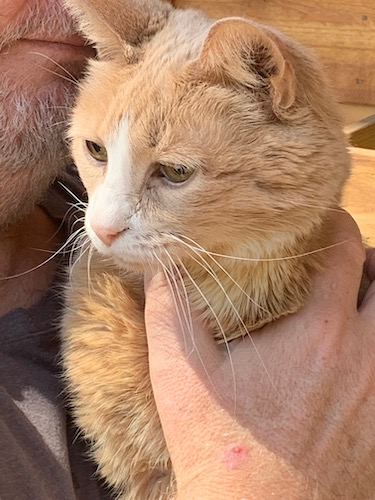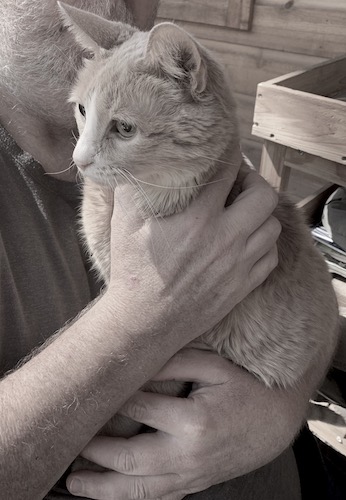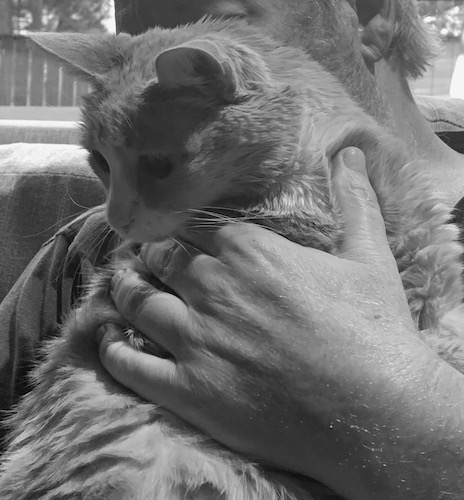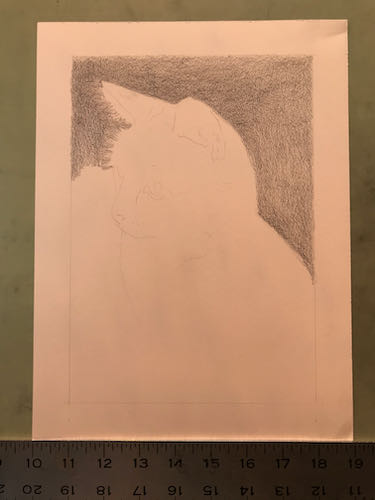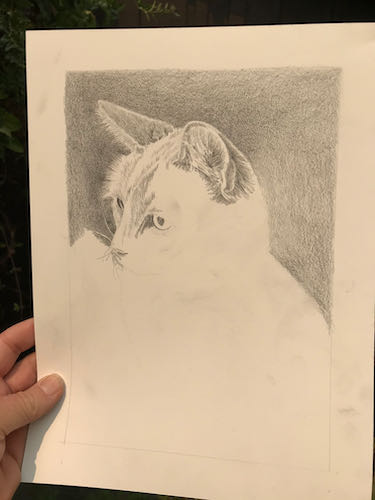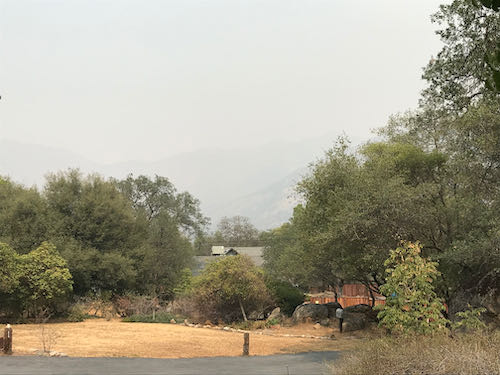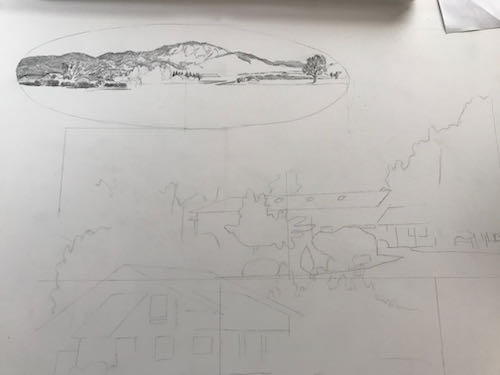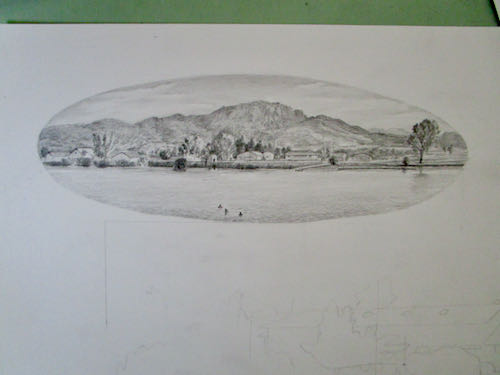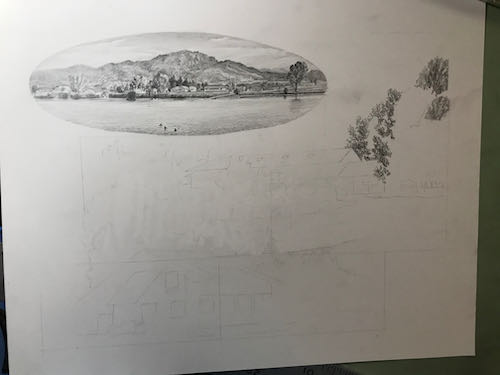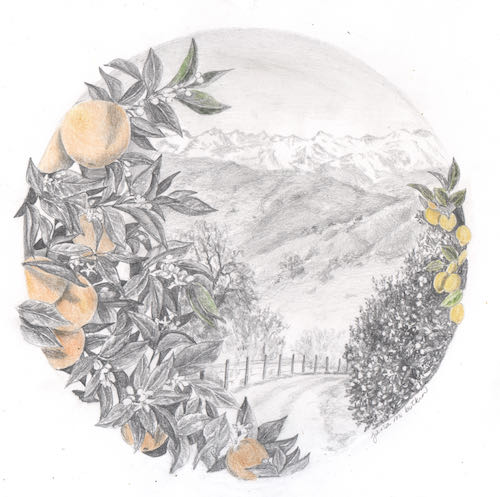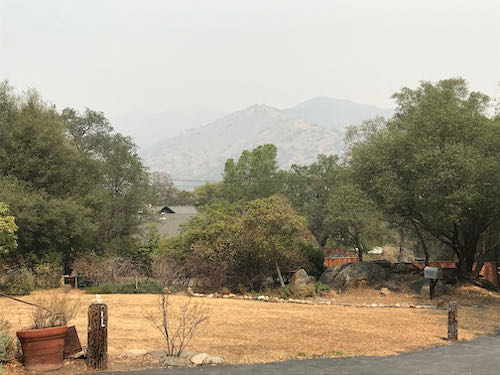The agreement with my customer M was that I would try to capture a likeness in her Dad’s face. If I was unable to do that, we would understand and accept that this job is beyond my ability. It is EXACTLY the kind of drawing job that I have struggled with for many years, and finally decided to stop accepting commissions for.
BUT, M is my friend and a great communicator, and I want to please her. I also like testing myself from time to time to see if I have improved.
Attempt # 3 was a reject.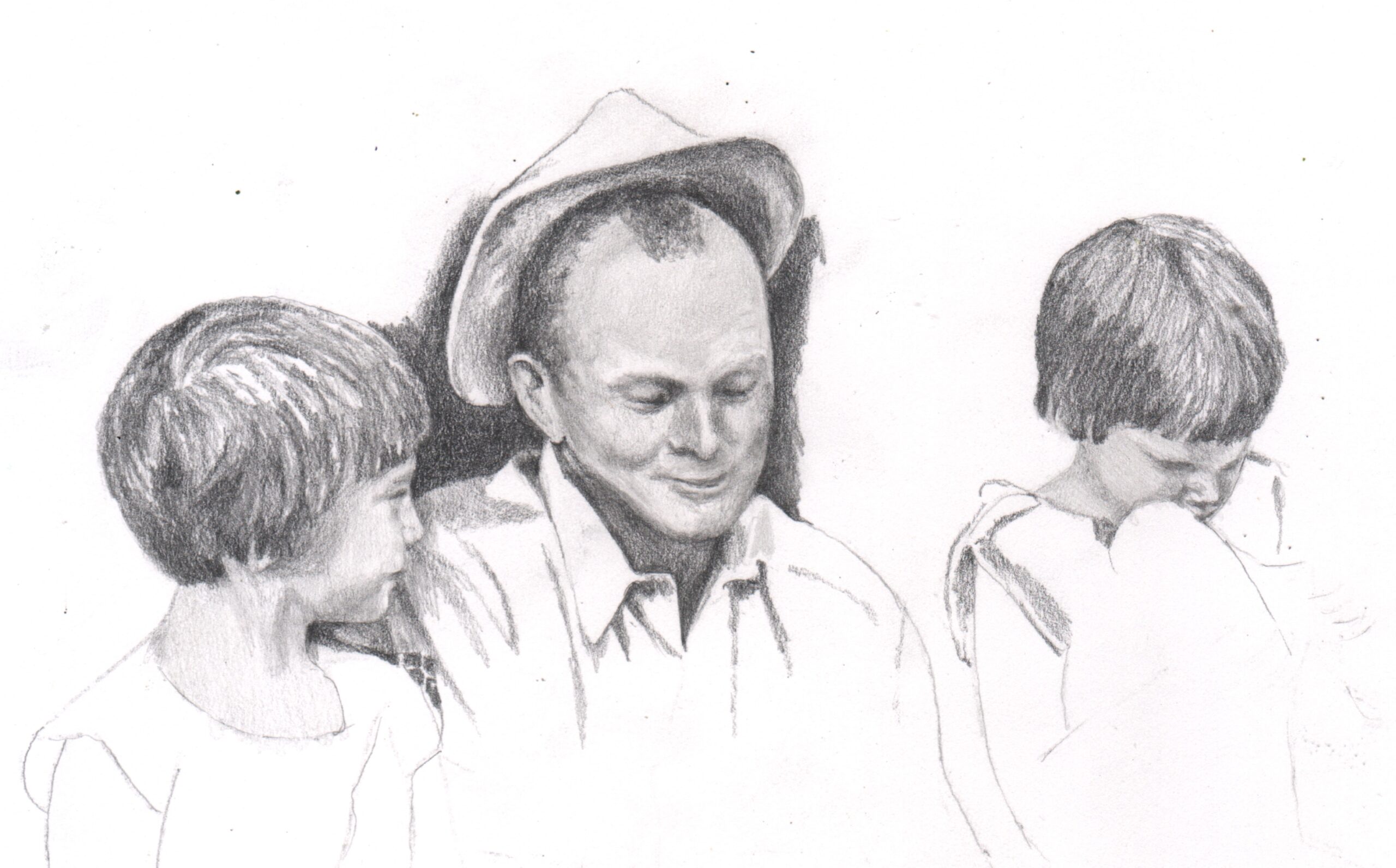
Attempt #4 was a reject.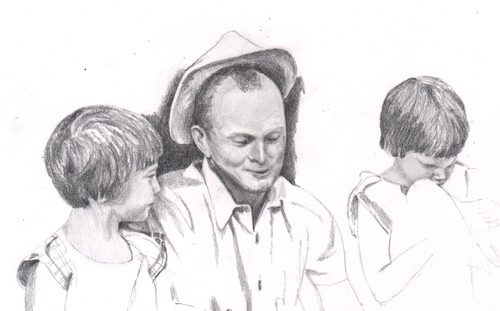
Attempt #5 was sent to M with this: “If this one isn’t right, then I am crying “uncle”, accepting the fact that this is beyond my ability, and throwing in the towel. (Jeopardy music in the background as the drawing awaits its fate. . .)”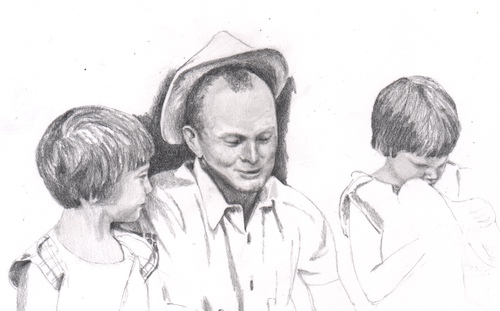
I recognized that I was falling into the trap of trying to do the impossible. I thought that I had chosen a large enough piece of paper to include the whole scene with faces large enough to draw, but I was wrong. The most minute change, a slight dab of the eraser, half a pencil point width change, using HB instead H or H instead of 3H (those are pencil hardness/darkness indicators), a vague variation in paper texture. . . all I am doing is tickling the paper and hoping something works.
So, for once in my career of accepting challenges that are beyond my ability to execute well in a manner that pleases the customer, I am willing to quit on this one and STOP SAYING YES TO THESE TYPES OF COMMISSIONS.
Nope. Didn’t look like M’s dad. Bye-bye, drawing.
P.S. M, it is not your fault. It is mine for saying yes when I knew better. Thank you for your patience and for the opportunity to try one more time and then finally accept reality.
See? I have tried and tried and tried with these tiny faces in the past:
More Can’t See ‘Ems This one worked because the customer didn’t know the people personally.
Custom Pencil Drawings Another one where the customer said a likeness wasn’t necessary.
P.S. I didn’t cry. It is just a figure of speech. Thank you for your concern.

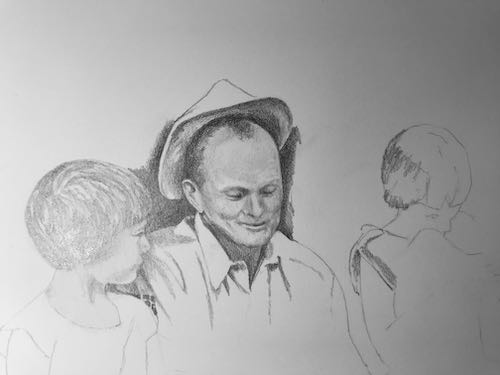
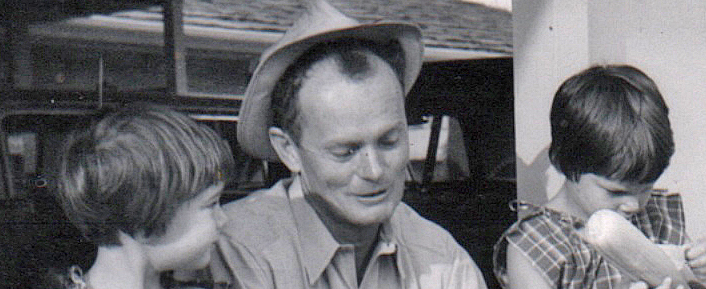
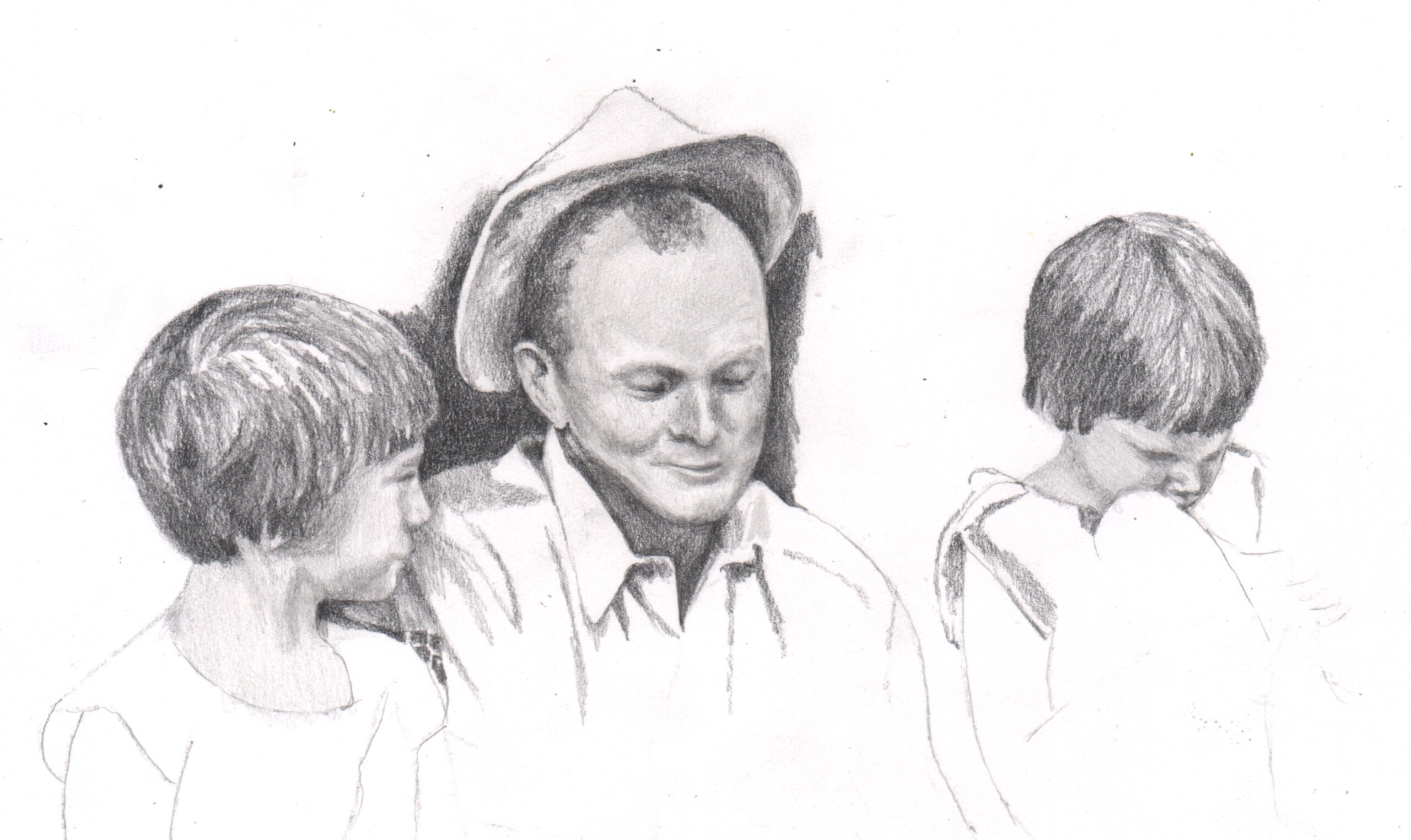
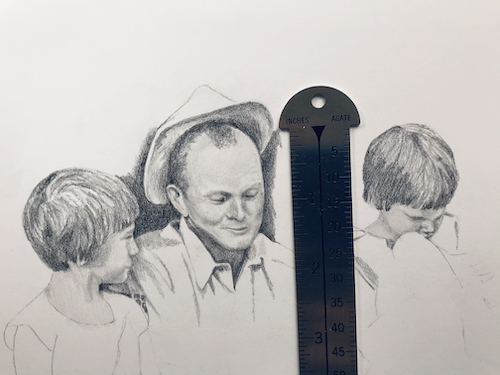

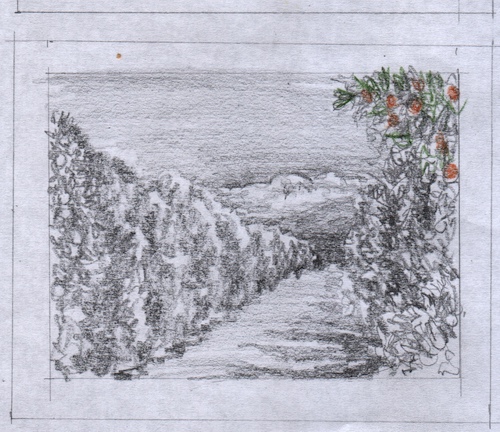
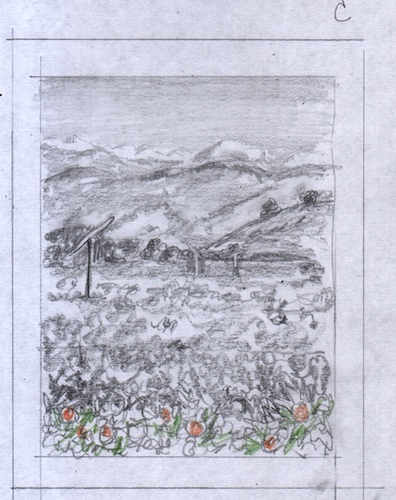
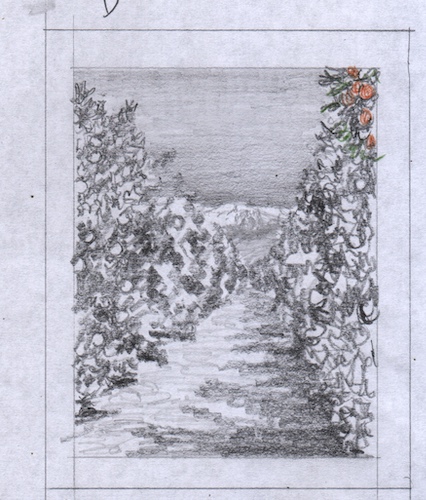
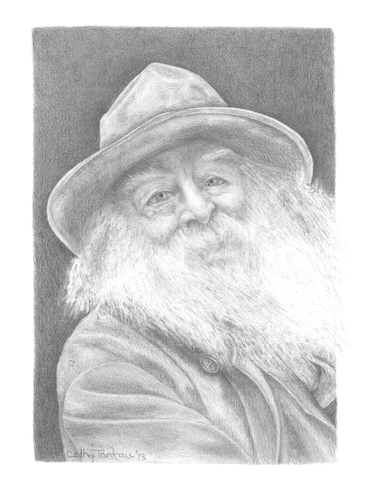 When I began drawing, I was a slave to the photographs that I worked from. I learned how to draw from real life, but nothing would hold still long enough so that I could measure. I didn’t have the skill, the instruction, the freedom and confidence to just loosen up and let my pencil fly around, getting close enough.
When I began drawing, I was a slave to the photographs that I worked from. I learned how to draw from real life, but nothing would hold still long enough so that I could measure. I didn’t have the skill, the instruction, the freedom and confidence to just loosen up and let my pencil fly around, getting close enough. 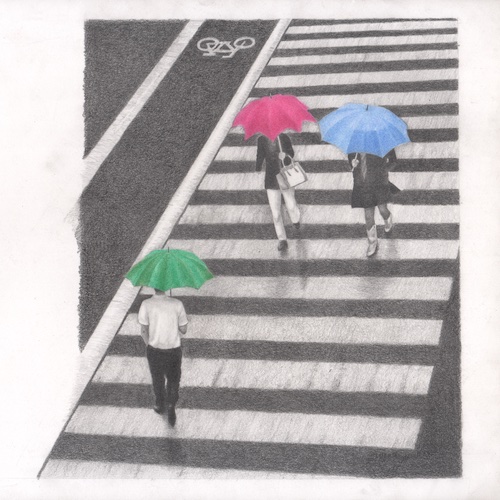
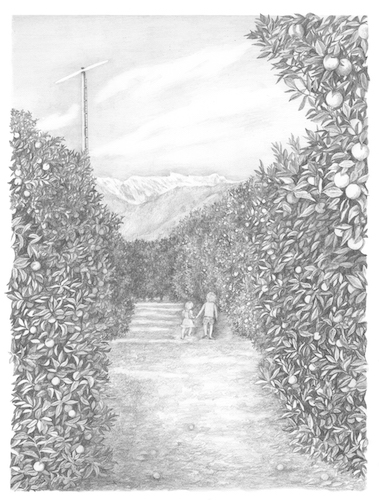 Mr. and Mrs. Customer requested a few more leaves and oranges to extend into the margins. I did a bit of subtle extensions, then sprayed, colored, and signed it.
Mr. and Mrs. Customer requested a few more leaves and oranges to extend into the margins. I did a bit of subtle extensions, then sprayed, colored, and signed it.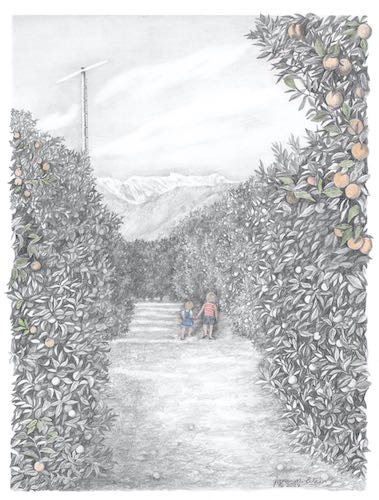
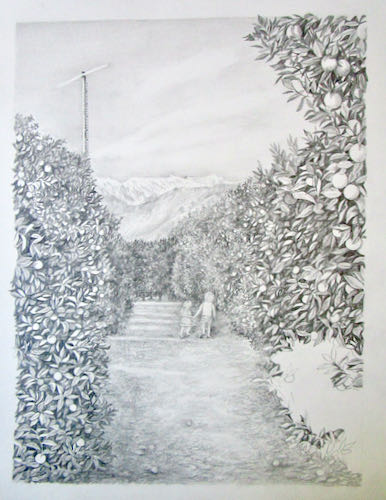 It is time for me to really study this pencil commission. The pencil drawing needs to be perfect, because the next step is to spray it with a fixative, to prevent smearing when I add colored pencil to a few areas.
It is time for me to really study this pencil commission. The pencil drawing needs to be perfect, because the next step is to spray it with a fixative, to prevent smearing when I add colored pencil to a few areas. 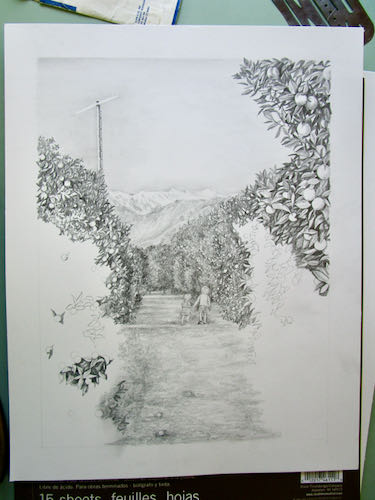 Have a look at the 2 little girls, the way I see them under the giant lighted magnifying glass. They truly are almost impossible to draw and hardly show up. But they will have color on them at the end, so they will be more visually significant.
Have a look at the 2 little girls, the way I see them under the giant lighted magnifying glass. They truly are almost impossible to draw and hardly show up. But they will have color on them at the end, so they will be more visually significant.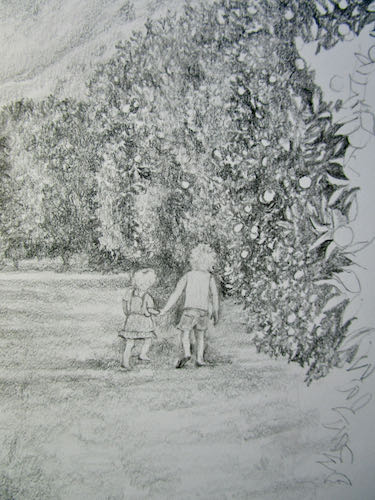
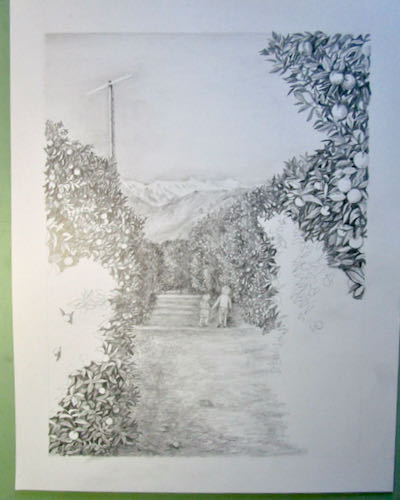
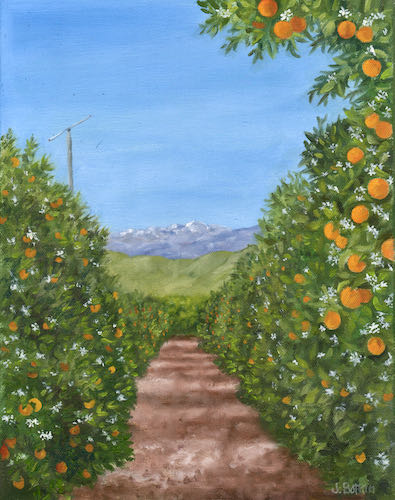
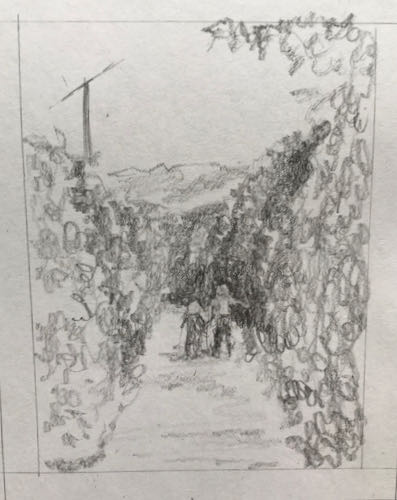
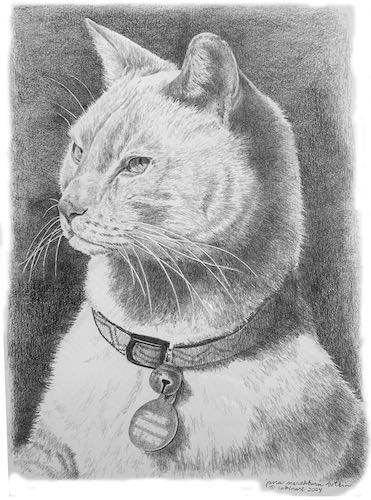 That was one alert cat!! When I was taking his photos, I reached out to touch him. He pulled away in a very subtle but arrogant manner. Made me laugh.
That was one alert cat!! When I was taking his photos, I reached out to touch him. He pulled away in a very subtle but arrogant manner. Made me laugh.